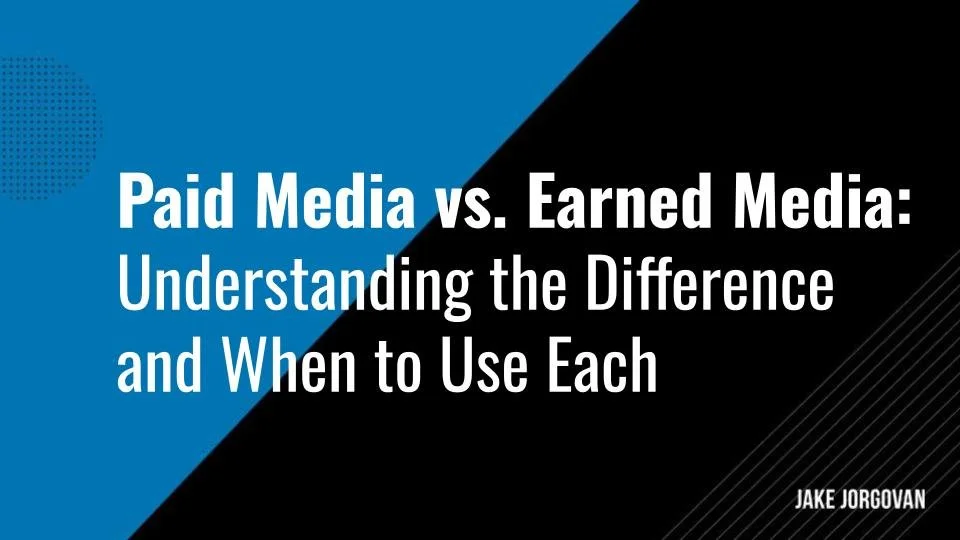Lifetime Value (LTV) vs. Cost per Acquisition (CPA): Optimizing for Profit
Only 23% of marketers are confident they’re tracking the right metrics. And 63% admit they struggle to measure ROI.
These numbers reveal a major issue: most marketers are flying blind.
But here’s the difference-maker—64% of top-performing B2B marketers have a documented strategy.
“Without the right marketing metrics, you are shooting in the dark. The only way to know if things are working for you or not is those metrics.” - Ian Brodie, marketing thought leader
Tracking the right metrics, like lifetime value (LTV) and cost per acquisition (CPA), is a big part of that.
In this article, we’ll break down the relationship between LTV and CPA.
You’ll learn how to balance them, make smarter decisions, and align your marketing spending with revenue goals.
From practical strategies to actionable insights, this is about optimizing for long-term success.
Let’s dive in.
P.S. Want expert help to optimize your LTV and CPA? Check out our Top 30 Advertising Agencies to find professionals who can elevate your marketing strategies and maximize your ROI.
What Is Lifetime Value (LTV)?
Customer lifetime value quantifies the total revenue a business anticipates from a single customer over their entire relationship.
Understanding LTV helps you identify high-value customers and allocate resources effectively.
The numbers will serve you well; a 5% increase in customer retention can boost profitability by 25% to 95%. Additionally, retaining existing customers will cost up to five times less than acquiring new customers.
Lifetime Value (LTV) Formula
LTV can be calculated through simple and advanced methods.
The basic formula is straightforward:
LTV = (Average Purchase Value) × (Number of Purchases per Year) × (Average Customer Lifespan).
For deeper insights, advanced models factor in:
Retention rates to account for customer loyalty.
Discount rates to adjust future revenue into present value.
Profit margins for a realistic view of net returns.
Using these methods allows you to measure profitability across customer segments and fine-tune your marketing efforts for long-term growth.
Advanced modeling provides valuable insights into sustainable strategies for increasing revenue per customer.
What Is a Good LTV?
Customer Lifetime Value (LTV) varies significantly across industries, from $1.13 million in architecture to $90,000 in digital design. Here’s a more in-depth breakdown:
| Industry | LTV |
|---|---|
| Architecture | $1.13 million |
| Business consultancy | $385,000 |
| Digital design | $90,000 |
| B2B financial advice | $164,000 |
| Healthcare consultancy | $330,000 |
| Insurance | $321,000 |
| Software | $240,000 |
These figures highlight the importance of tailoring your marketing strategies to your specific business model and customer base.
What Is Cost per Acquisition (CPA)?
Cost per acquisition (CPA) measures the total cost of acquiring a single customer.
It accounts for all marketing expenses tied to a predefined action, such as a purchase or subscription.
Why Monitor CPA?
CPA helps you assess the efficiency of your marketing channels. A lower CPA indicates effective customer acquisition efforts, ensuring your marketing budgets deliver a positive return.
For example, e-commerce companies using Google Ads or Facebook Ads track CPA to optimize advertising spend and target audience segments that drive a higher likelihood of conversion.
Monitoring CPA – and adjusting your strategies when you spot problems – ensures sustainable growth while aligning acquisition strategies with revenue goals.
Cost per Acquisition CPA Formula
Calculating Cost per Acquisition (CPA) starts with a simple formula:
CPA =Total Marketing SpendNumber of New Customers Acquired
To refine this metric, include additional costs tied to customer acquisition efforts:
Sales expenses, such as commissions or salaries for your sales team.
Overheads, including software tools like Google Analytics or Facebook Pixel.
Advertising costs across social media platforms and other channels.
What Is a Good CPA?
A good CPA depends on your industry. The average cost per acquisition in Google & Microsoft Ads by industry varies from $21.12 in automotive to almost $133 in career & employment.
The Relationship Between LTV and CPA
Analyzing LTV and CPA together reveals how profitable your customer segments are. That’ll help you allocate marketing budgets effectively and achieve sustainable growth.
Ideal LTV: CPA Ratios
A 3:1 LTV-to-CPA ratio is a standard benchmark for long-term profitability.
An LTV that is three times higher than your CPA indicates efficient marketing efforts and sustainable customer acquisition costs.
Pro tip: This is also a good ratio covering acquisition costs while leaving room for reinvestment. It ensures a sufficient profit buffer to absorb market fluctuations, account for unexpected churn, and support future investments, so it’s a safer and more sustainable threshold for long-term success.
For example, if an e-commerce company spends $100 to acquire a customer and generates $300 in customer lifetime revenue, it meets this benchmark.
Ratios below 3:1 suggest inefficient acquisition strategies or high churn rates.
Ratios significantly above 3:1 may point to missed opportunities for growth, as the business could afford higher marketing spend to expand its customer base or improve conversion rates.
Risks of Imbalanced LTV and CPA
A high CPA relative to LTV signals unprofitable customer acquisition, straining marketing budgets and hindering long-term profitability.
Conversely, a low CPA compared to LTV may indicate underinvestment in growth, leaving valuable customers untapped.
However, an imbalance can work in certain cases.
Early-stage SaaS companies might accept a high CPA if future revenue from upsells or product upgrades justify the investment.
Similarly, businesses using referral programs may sustain low CPA relative to LTV, as satisfied customers drive organic growth without additional marketing costs.
Balancing risks and rewards depends on business models and strategic priorities.
3 Key Strategies to Optimize for Profit
Let's dive into actionable strategies that align lifetime value (LTV) with cost per acquisition (CPA). The point is ensuring every dollar spent fuels long-term profitability:
1. Enhance LTV
To enhance LTV, consider implementing the following strategies:
Foster connections through valuable content: Regularly sharing insightful content via social media, blogs, and email marketing can strengthen relationships with your audience. For example, 92% of customers seek reviews and recommendations from existing customers. This highlights the importance of using user-generated content to build trust with them.
Implement loyalty programs and exceptional service: Effective loyalty programs can significantly increase customer retention. For instance, 65% of a company's revenue comes from repeat business of existing customers. This means there’s real value in retaining loyal customers.
Upsell and cross-sell to elevate purchase value: Strategic upselling and cross-selling can enhance your average order value. That’s why businesses that effectively implement upselling see a 20% increase in customer lifetime value.
Personalize marketing efforts: Tailoring marketing messages to individual preferences will scale your engagement. 77% of business leaders recognize that offering personalized support experiences, for example, leads to increased customer retention.
Pro tip: Use predictive analytics to identify high-value customers with a high likelihood of conversion. Focus loyalty programs and personalized recommendations on this segment. Integrate tools like Google Analytics and Facebook Pixel to track user behavior across touchpoints. This strategy minimizes acquisition costs while boosting revenue per customer over the long term.
2. Reduce CPA
To reduce cost per acquisition and enhance marketing efficiency, we found the strategies below to be most useful:
Leverage User-Generated Content (UGC) and Influencer Partnerships
Incorporating UGC into your advertising efforts can significantly improve performance. Ads featuring UGC have been shown to achieve four times higher click-through rates and a 50% reduction in cost-per-click compared to traditional brand-created content.
Consider that nano-influencers, for example, cost an average of $100 per post.
Mitigate Ad Fatigue with A/B Testing
A/B tests on creative assets help identify the most effective marketing messages. So reproducing these messages or finding similar high-performing creators reduces ad fatigue and improves engagement. That’s because your target audience remains responsive to your advertising efforts, so you can spend less on attracting new prospects.
Invest in Search Engine Optimization (SEO)
While SEO may require a substantial initial investment, it can drive over 40% of a website's revenue through organic traffic. This is a solid and sustainable customer acquisition channel that reduces dependency on paid advertising.
Target high-quality leads through data-driven marketing
Targeting high-quality leads through data-driven marketing ensures your efforts focus on prospects most likely to convert.
For example, a healthcare SaaS company can use CRM data to identify clinics that frequently upgrade their software. They might then run LinkedIn ad campaigns targeting decision-makers in similar-sized clinics with messages tailored to their needs.
Or, an e-commerce platform can analyze purchase history and engagement data to segment users who frequently shop during seasonal sales. The platform can then deliver exclusive early-access offers to this segment, which leads to higher conversion rates.
Use tools like Google Analytics or HubSpot to do precise targeting based on user behavior and demographics. This will reduce your CPAs and maximize your ROI.
Optimize sales funnels to increase conversion rates
Optimizing sales funnels to increase conversion rates is a powerful way to reduce CPA. For example, you can simplify the checkout process by reducing the number of steps or offering guest checkout options, which can prevent cart abandonment.
Personalizing email retargeting campaigns with dynamic product recommendations for users who browsed but didn’t purchase can nudge them toward conversion.
Adding trust signals, such as customer reviews or secure payment badges, on landing pages helps build confidence and improves conversions.
Utilize cost-effective marketing channels
Exploring and leveraging cost-effective channels, such as content marketing and social media advertising, can expand reach without significantly increasing marketing costs. These channels have better cost-per-action metrics, which, for you, means lower CPAs.
Pro tip: Use heatmaps and session recordings to analyze drop-off points in your conversion funnel. Identify pages with high exit rates and optimize them with clear CTAs, faster load times, and simplified forms. Focus on reducing friction in these areas to improve conversion rates and lower your CPA without increasing ad spend.
3. Balance LTV and CPA
Allocating marketing budgets based on the LTV vs. CPA analysis helps you optimize marketing spend, both between and within channels. That’s how you get to efficient customer acquisition and long-term profitability.
Of course, continuous monitoring and adjusting strategies to maintain optimal ratios are essential for sustaining growth and profitability.
For example, Wix, the website builder and CMS provider, presents a version of the LTV to CPA ratio called 'Time to Return On (Marketing) Investment.'
This looks at the cumulative 'cohort bookings' compared to marketing costs, citing a ratio of 4.8x after 19 quarters (4.25 years) based on the Q1 2018 cohort.
Optimize LTV and CPA Examples
Here are examples of companies that have successfully optimized their LTV and CPA and made their business more profitable.
1. Amazon
Amazon focused massively on customer satisfaction and implemented programs like Amazon Prime. The results were increased customer retention and spending.
That’s because Prime members spend approximately $1,400 annually, compared to $600 by non-members.
The company also leverages customer data to offer tailored promotions, increasing repeat purchases and overall profitability.
2. Netflix
Netflix focuses on reducing churn rates to enhance LTV.
With an average subscriber retention of 25 months and a churn rate of around 4%, Netflix maintains a high LTV. Of course, this LTV contributes to its sustained profitability.
Here’s how Netflix does it:
The company’s algorithm-driven content recommendations keep users engaged, so they extend their subscriptions.
Netflix also invests heavily in original programming, such as hit series and films. This attracts and retains long-term subscribers, solidifying their revenue streams in the process.
3. Fabletics
Fabletics does performance-based advertising and real-time budget allocation based on LTV data. That way, Fabletics decreased customer acquisition costs by 11% and increased subscribers by 67%. This contributed to its $1 billion valuation.
To sustain growth without sacrificing performance, Fabletics also collaborated with TubeScience. The company conducted historical analysis and market research to identify underserved audiences.
The agency then produced original videos with diverse casting, messaging, and visuals to reach women of various personas. Even better, it continuously iterated on the content to keep it fresh and engaging despite high spending levels.
This reduced ad fatigue and increased customer engagement, leading to lower acquisition costs and more long-term loyalty – aka lower LTVs.
4. OTTO
The German e-commerce platform partnered with Liftoff to optimize its mobile campaigns. The campaign had a 236% increase in D30 return on ad spend (ROAS) for iOS and a 72% increase for Android. They even scaled ad spend by 400% over two years.
So how did they do it, you ask?
“ For example, a banner ad saw a 22% lift in installs by replacing a stock photo of running shoes with a product image. Another saw a 17% lift by adding a more prominent CTA.” (Otto Case Study by Litoff)
OTTO’s data-driven approach to audience segmentation improved its ad targeting precision. This maximized their campaign performance, leading to lower CPAs and higher LTVs.
Leverage LTV and CPA: Proven Strategies to Maximize Marketing ROI in 2025
Understanding the balance between LTV and CPA is crucial if you’re aiming for sustainable profitability.
Our analysis has shown that while a significant number of marketers struggle with measuring the right metrics, those who track and balance LTV and CPA effectively enjoy better financial outcomes.
This article gave you practical strategies to increase LTV and reduce CPA. You now have a roadmap to align your marketing expenditures with long-term revenue goals.
However, the relationship between LTV and CPA is influenced by changing consumer behaviors and technological advancements. This means you must pay attention and regularly revise these metrics to adapt to new conditions and ensure financial health.
Use our insights to fine-tune your approach to customer acquisition and retention. It’s your best bet for optimizing every dollar spent to achieve maximum profitability over the customer lifecycle.
P.S. Want to maximize your LTV and minimize your CPA? Explore our Best 30 Retargeting and Remarketing Agencies to find experts who can help refine your strategies, improve conversions, and drive sustainable growth.
Frequently Asked Questions
What is the ideal Lifetime Value (LTV) to Cost per Acquisition (CPA) ratio for long-term profitability?
A common rule of thumb is an LTV: CPA ratio of 3:1, balancing acquisition cost against revenue goals. For SaaS companies or subscription models, acceptable CPA targets may vary, especially in the early stages of growth. Regularly tracking this ratio helps optimize acquisition strategy and identify profitable audience segments.
How can businesses effectively calculate and track their LTV and CPA metrics?
Use advanced tools like Google Optimize or heatmaps to evaluate user behavior, purchase intent, and drop-off points. Break down marketing spend across acquisition strategies and compare conversion tracking reports to identify areas of improvement. CAC ratio and CPA formula calculations ensure precise cost management.
What are the risks of focusing too heavily on reducing CPA without considering LTV?
Lowering CPA at the expense of customer quality can increase churn rates, reducing long-term profitability. High-value customers who generate repeat business may be overlooked. Balancing the acquisition cost with the likelihood of conversion is necessary to secure profitable segments over a defined time frame.
What strategies can marketers use to enhance customer lifetime value?
Introduce exclusive content and personalized recommendations to encourage additional purchases. Implement referral programs to lower the cost of acquisition while increasing retention. Customer retention strategies, such as offering complementary products, improve the average retention rate and boost revenue per user.
How does balancing LTV and CPA impact marketing budget allocation?
Analyzing campaign performance and CPA ratio helps allocate advertising spending efficiently. By focusing on long-term loyalty and conversion funnels, you can reduce sales cycle length while maximizing revenue potential within each audience segment.
What role do advanced analytics and predictive modeling play in optimizing LTV and CPA?
Advanced analytics highlights key metrics like purchase frequency and cost per conversion. Predictive models leverage these user demographics, metrics, and conversion goals to forecast future revenue. The point is to optimize marketing messages for maximum returns.
How can businesses adapt their LTV and CPA strategies to evolving market conditions?
Testing insights from online advertising channels, like social media platforms or Google AdWords, ensures strategies stay competitive. Experiment with platforms to identify effective channels, reduce advertising costs, and refine the sales funnel for long-term subscribers.













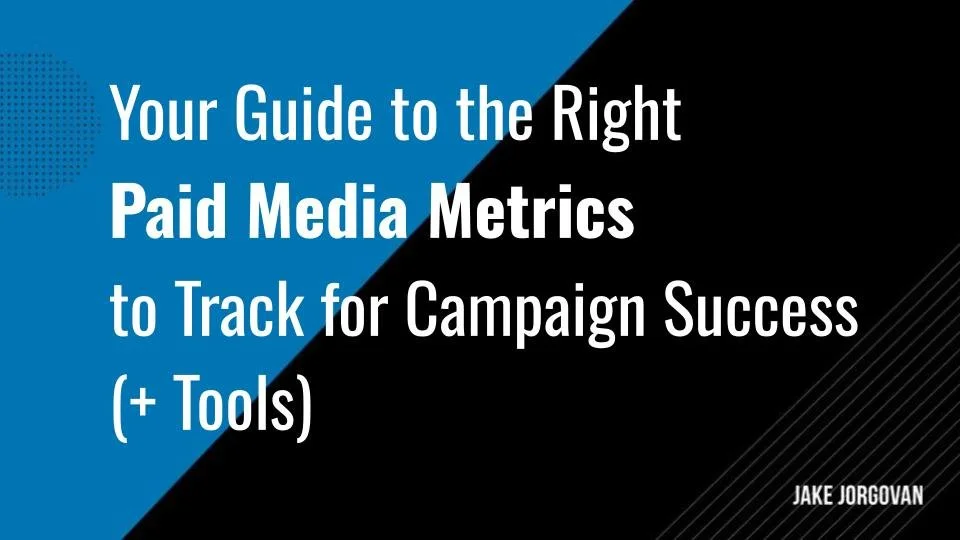



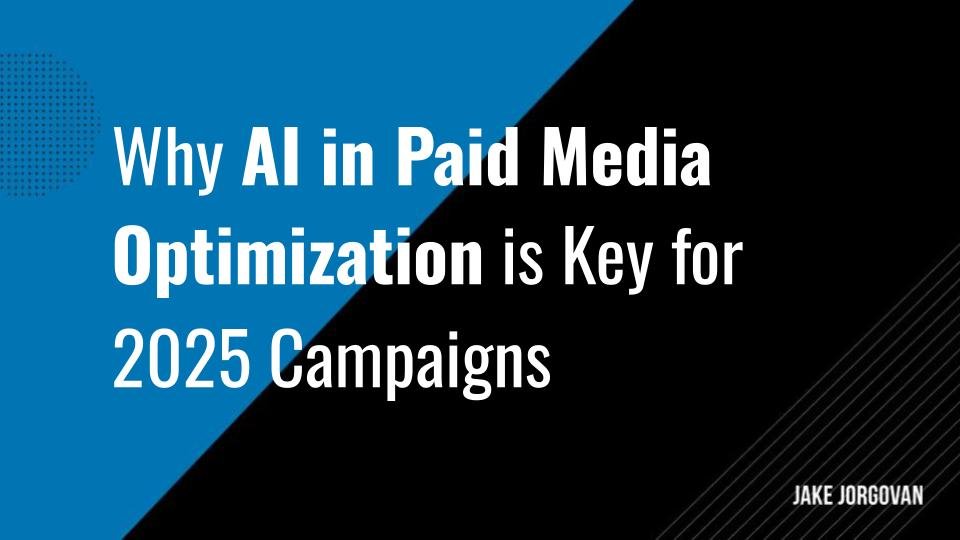
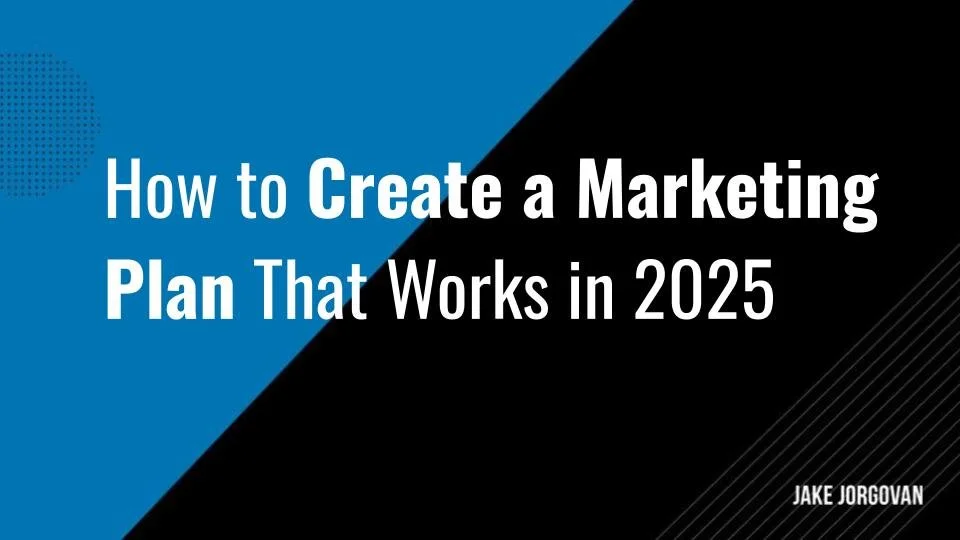
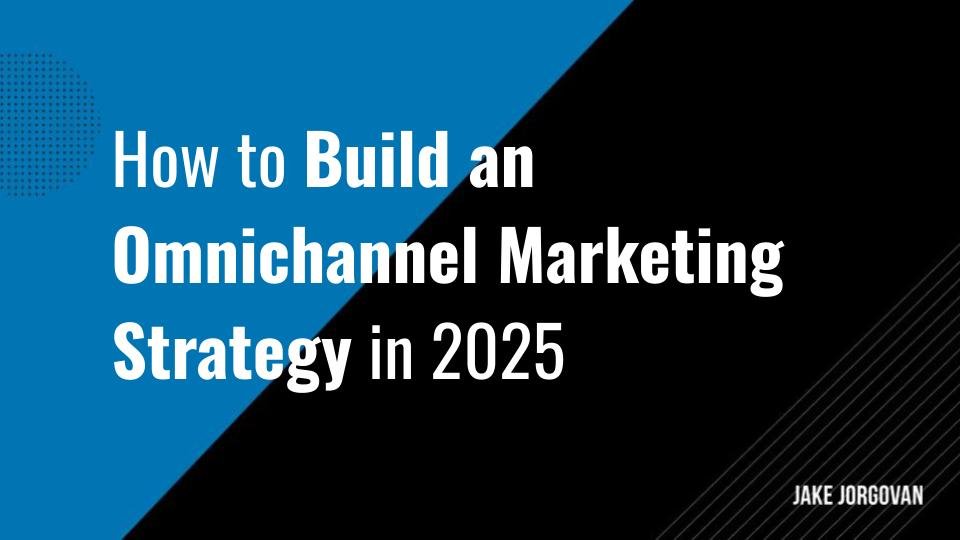

![Top 22 Paid Media Agencies to Work With in 2025 [Updated in March]](https://images.squarespace-cdn.com/content/v1/50baa49de4b0e51d69257e33/1705515561307-56Z45GN80B4L6J77ELDR/Top+12+Paid+Media+Agencies+to+Work+With+in+2024+%5BUpdated%5D.jpg)







